
The 620 unique gardens of the National Plants Collection
[caption id="LivingLibraries_Feature" align="aligncenter" width="1024"]

©ASHLEY COOPER/ALAMY
TO PRESERVE BRITAIN’S CULTIVATED FLORA IN SETTINGS OPEN TO THE PUBLIC
Wedgwood-colored pyramid of agapanthus soars above a crowd of admirers at the Royal Horticultural Society’s Flower Show at Tatton Park in Cheshire. Around it glow banks of pink and purple fuchsia, yellow and orange chrysanthemums, multicolored dahlias, delicious roses. They have their admirers, but nothing quite competes with Steve Hickman’s elegant display. When designers needed some white agapanthus to adorn Leicester Square during the Olympics, they came to him. As the holder of the National Collection of agapanthus, Hickman cultivates 600 varieties at the Hoyland Plant Centre near Barnsley.
Nearby, Leila Jackson of Wall End Nursery in Leominster shows her less dramatic, but no less lovely, National Collection of abutilons. Also called flowering maples, their bell-shaped flowers nod in shades of tangerine, pink and cream. Jackson is keen to get more. “Being granted a National Collection puts you on your toes, because you have to go around and find the varieties that you are missing,” she explains. Similarly, Steve Hickman keeps his National Collection up-to-date by buying three plants of any new agapanthus variety.
[caption id="LivingLibraries_img1" align="aligncenter" width="453"]

©NAGELESTOCK.COM/ALAMY
[caption id="LivingLibraries_img2" align="aligncenter" width="1024"]
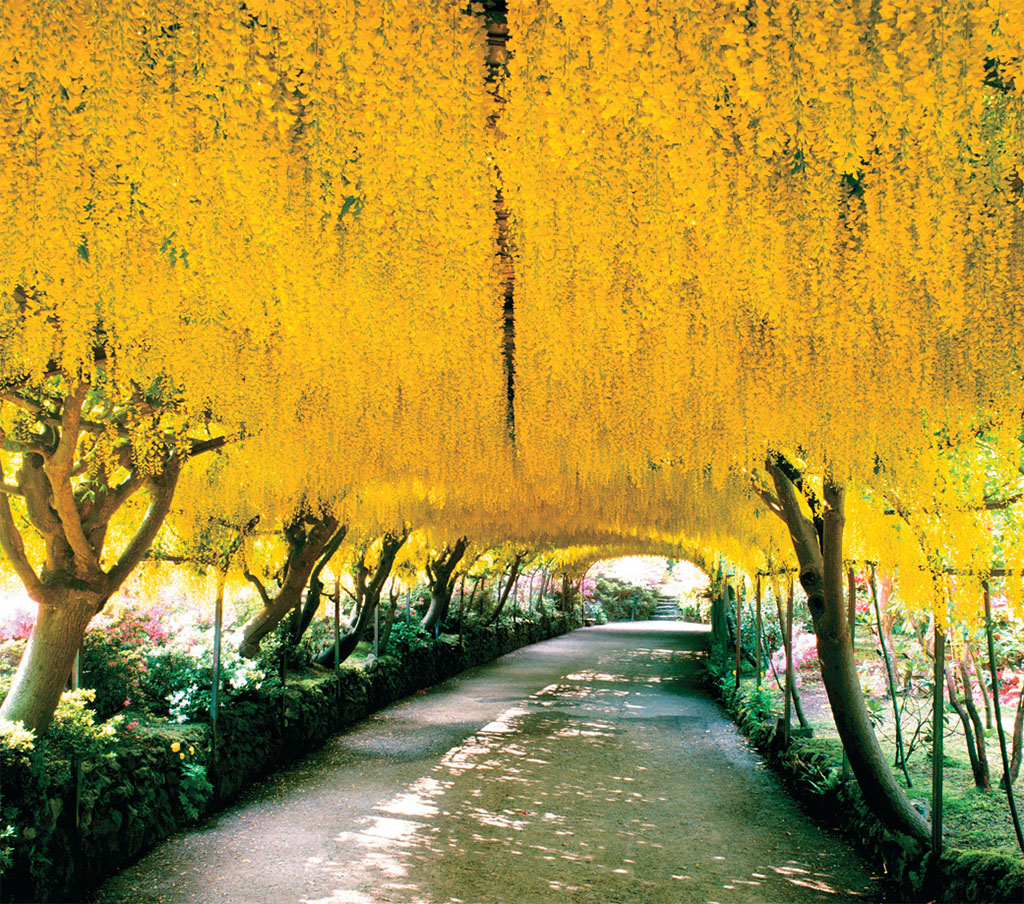
©HOLMES GARDEN PHOTOS/ALAMY
Hickman calls the National Plant Collections “living libraries.” The scheme is run by Plant Heritage (National Council for the Preservation of Plants and Gardens), the world’s leading garden plant conservation charity. It aims to preserve, propagate and document Britain’s cultivated plants. National Plant Collections must include at least 75 percent of the varieties of a plant. There may be several collections of each genus. Many horticulturalists limit their collections to a subgroup. A rose collection could focus on Rosa rugosa or a hosta collection may include only Lachman hybrids, for example.
Currently 620 National Collections of plants can be found in gardens and arboretums, parks and palaces in every region of Britain. Many holders are research institutions such as botanic gardens or universities, where scientists may investigate the taxonomy and history of plants, or focus on optimal growing conditions for better yields, or try to identify plants with pharmaceutical potential.
Yet other collection holders are gardeners who love a particular plant. For example, Trevor Key bought a tiny yucca in a Tesco supermarket, fell in love with it and bought more and more. As his yuccas grew, he needed space, and found it at Renishaw Hall in Derbyshire, the ancestral home of the Sitwell family, which now exhibits the National Yucca Collection in a former orangery.
Holders of National Collections come from all walks of life. HRH The Prince of Wales holds a National Collection of beech at his home in Gloucestershire, where he also has a National Collection of giant-leaved hosta in the stumpery garden. The Royal Household has a National Collection of mulberries in the grounds of Buckingham and Kensington palaces. Liverpool and Derby are among several city councils that hold National Collections—dracaena and hydrangeas respectively—which they display in local parks and around the city. Many commercial growers have National Collections and so do many ordinary householders, some of whom rent allotments to have space for their plants.
[caption id="LivingLibraries_img3" align="aligncenter" width="1024"]
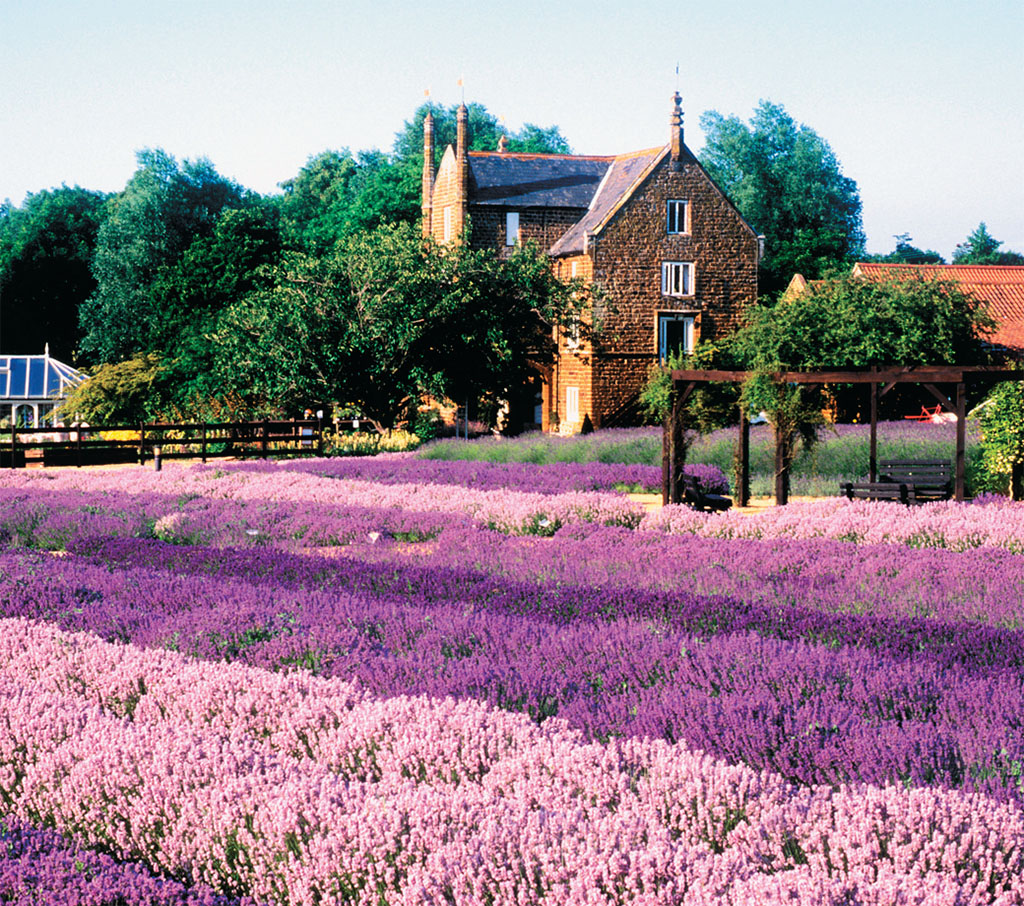
©GILES BERNARD
Space is not a real problem at Erddig Hal, the 18th-century National Trust property near Wrexham, which holds the National Collection of ivy. A hundred kinds cling to the ancient brick walls surrounding the estate. Labels identify each cultivar so visitors can easily compare varieties. Similarly, the quinces in the National Collection at Norton Priory in Runcorn are conveniently grouped together in the walled kitchen garden and orchard. Alternately, many gardens mix their collections with other plants in colorful beds and borders. Caryopteris in Bristol Zoo Gardens’ National Collection adds blue punctuation to the lovely groupings of mixed flowers, and the fuchsias in the National Collection at Harlow Carr near Harrogate are dispersed throughout the perennial borders.
All National Plant Collections must be open to the public. Many are in public parks that open year round, or stately homes and National Trust properties that close only in winter, when few plants are at their best. Similarly, commercial growers have extensive opening hours. Steve Hickman makes a point of inviting every customer at the Hoyland Plant Centre to take a look at his agapanthus. Even private gardeners who cannot feasibly open their gardens all the time show their collections by appointment.
[caption id="LivingLibraries_img4" align="aligncenter" width="996"]
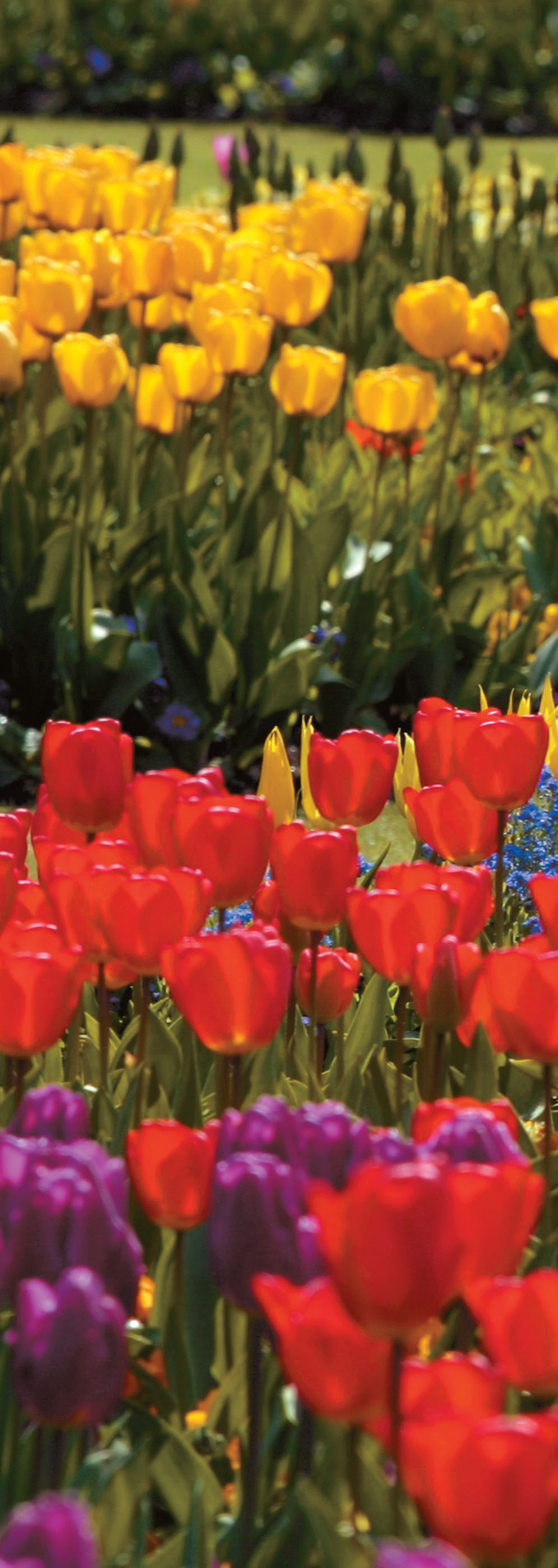
©STEVE VIDLER/ALAMY
To locate a National Collection of plants go to www.nccpg.com, the website of Plant Heritage. Enter a county or region of interest. You will get a list of all the National Collections in that area listed under their Latin name. Hit any of interest and the holder’s address and information about the collection will appear. Alternately, you could enter the name of a plant that interests you, and find which gardens hold a National Collection.
Here are ten great collections in public gardens to whet the appetite for these extraordinary “living libraries.”
1. Bodnant Garden, Colwyn Bay, Conwy
Bodnant’s lovely terraced gardens overlook the Conwy estuary, dropping down flowery hillsides to a wooded dell. Famous for roses, rhododendrons, hydrangeas and magnolias, Bodnant holds the National Collection of eucryphias—a tree that is covered with white or pink blooms in August and early September. Bodnant also has National Collections of rhododendron forrestii hybrids, which bloom in spring; Chilean fire-bush, which blooms in early May, and magnolias, in bloom between April and September.
www.bodnant-garden.co.uk
2. Bristol Zoo Gardens, Clifton
Bristol Zoo is as famed for its flowers as for its animals. It holds two National Plant Collections: caryopteris, commonly called bluebeard, a late-blooming blue-flowered Chinese plant, and hedychium, better known as the ginger lily. Both have won gold medals at the prestigious Hampton Court flower show. Bristol Zoo Gardens is also home to rare plants including the moth orchid and the local Bath asparagus, which is an endangered species. www.bristolzoo.org.uk
3. Holehird Gardens, Patterdale Road, Windermere, Cumbria
Cultivated entirely by volunteers, Holehird Gardens occupy an airy hillside with sweeping views across the Lake District. It maintains three National Plant Collections. In July and August 200 astilbe cultivars blanket the slope in pink, mauve and cream, while more than 300 hydrangeas form a resplendent Hydrangea Walk. The National Collection of polystichum, an evergreen fern, is of special importance. With only half of the 300-400 Victorian cultivars remaining, the 60 cultivars and 9 foreign species at Holehird claim special botanical importance.
www.holehirdgardens.org.uk
[caption id="LivingLibraries_img5" align="aligncenter" width="453"]

©SCOTTISHVIEWPOINT/ALAMY
4. Norfolk Lavender, Heacham, King’s Lynn, Norfolk
This famous commercial grower holds more than 100 varieties of lavender in its National Lavender Collection. July and August are the height of the lavender season. This is when the lavender oil is distilled. Throughout the summer visitors can see fields of lavender, the herb garden and a rare-breed animal center. The restaurant highlights cream teas with lavender scones. www.norfolk-lavender.co.uk
5. Queen Mary’s Garden, Regent’s Park, London
Named after the Queen’s grandmother, this garden displays its National Collection of 43 of the 52 known named varieties of delphiniums in a border that faces the magnificent Jubilee Gate. Gardener Andrew Williams says, “When in full bloom (mid-late June) the rich and varied shades from white, cream, yellow, pink, mauve, lavender, blue and purple look fantastic.” A second flush of bloom occurs late-August into September. These are good times to see the garden’s 12,000 classic and modern varieties of rose, and also the begonia garden, where 9,000 begonias are planted twice yearly for continuous summer bloom. Other horticultural attractions in Regent’s Park include a wildlife garden and an allotment garden.
www. royalparks.org.uk/parks/the-regents-park
[caption id="LivingLibraries_img6" align="aligncenter" width="1024"]
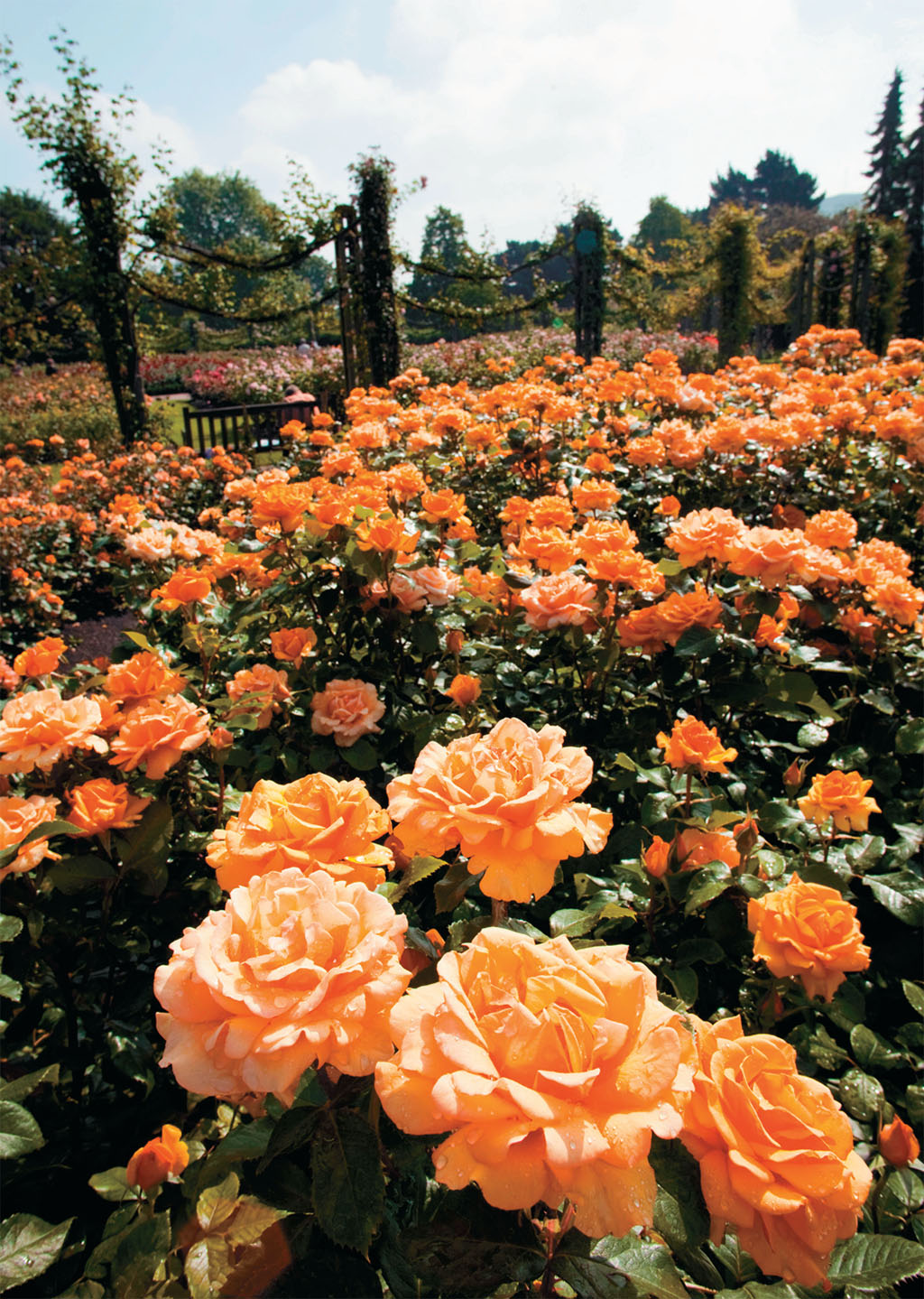
©ASHLEY COOPER PICS/ALAMY
6. Renishaw Hall and Gardens, Renishaw, Nr, Sheffield
This Derbyshire mansion has been home to the Sitwell family for 400 years. Its Italianate Gardens were created in the late 19th century. With a bluebell wood, a fountain and a lake, they are among the most beautiful in England, and home to the National Collection of yuccas. Many are used as focal points in the long herbaceous borders; others achieve great height in a former orangery, now restored and evocatively renamed: The Yuccary. Open April through September 30 with tours of the house on Fridays and weekends.
www.renishaw-hall.co.uk
[caption id="LivingLibraries_img7" align="aligncenter" width="1024"]
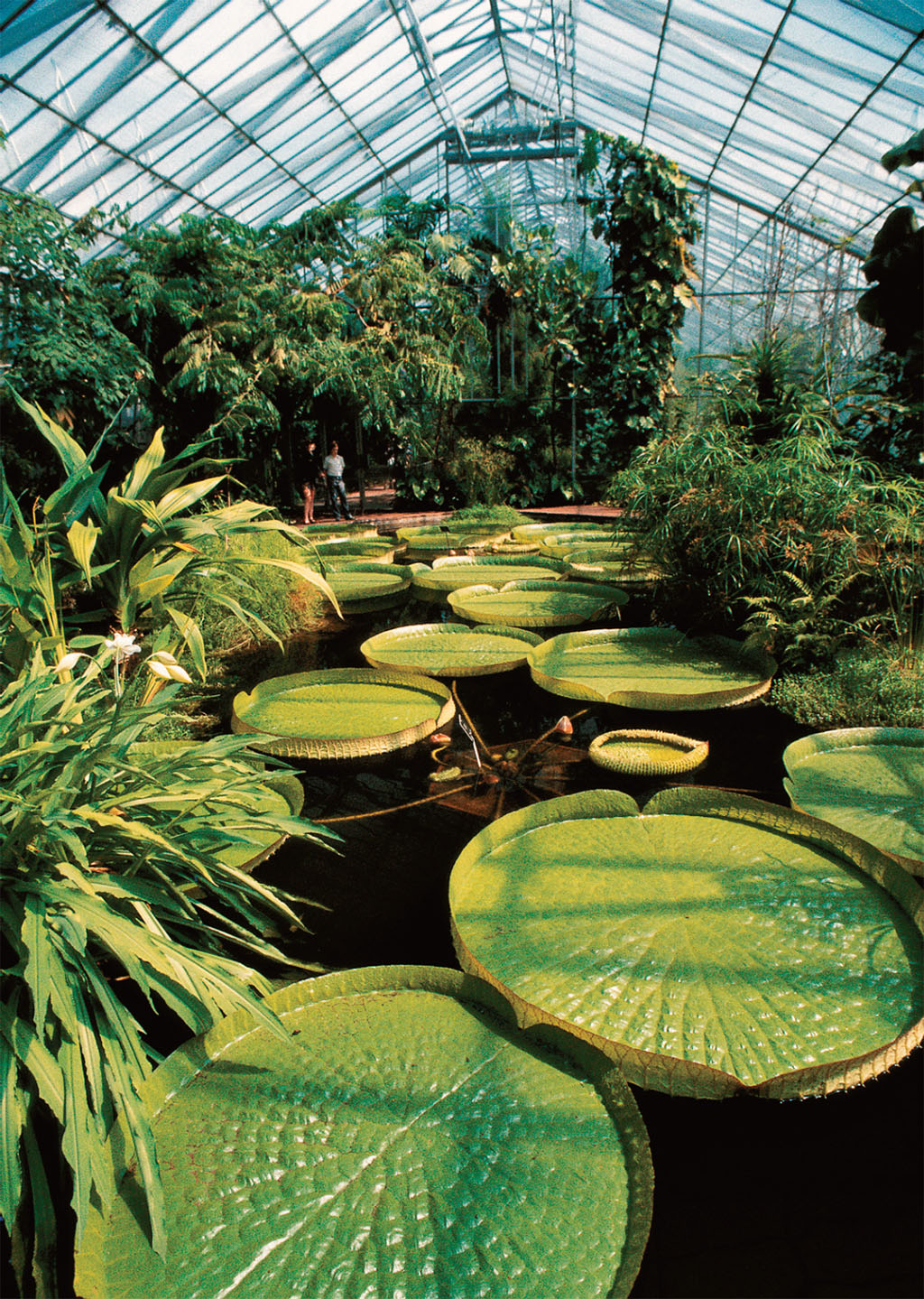
[caption id="LivingLibraries_img8" align="aligncenter" width="996"]
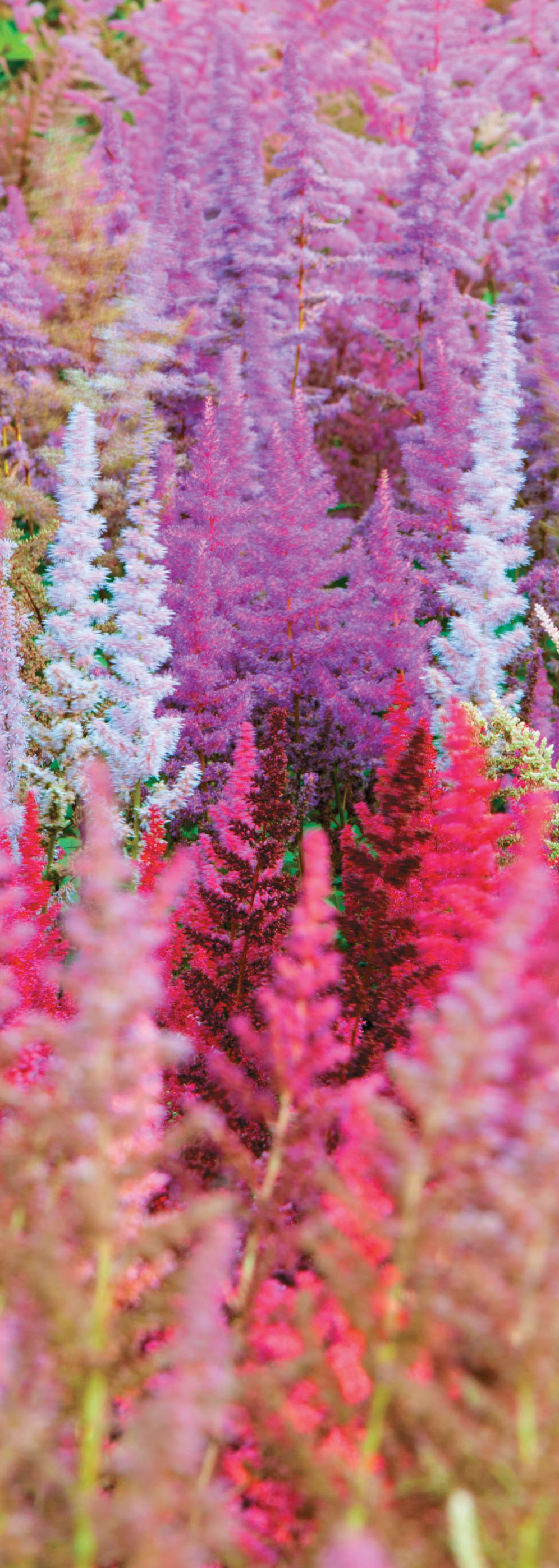
7. The Royal Botanic Garden, 20A Inverleith Row, Edinburgh
Founded in 1670 to grow medicinal plants, Edinburgh’s Botanic Garden appeals to cooks as well as horticulturalists with its National Collections of members of the Zingiberaceae family, including Curcuma, better known as turmeric, and collections of three varieties of culinary ginger. It also has spectacular ginger lilies, and a National Collection of the subtropical climber Aeschynanthus. Its most colorful National Collection—and the world’s largest—is of Vireya rhododendrons, which come in a variety of shapes, sizes and vivid colors.
www.rbge.org.uk
8. Royal Horticultural Society (RHS) Garden, Harlow Carr, Harrogate
Famous for the longest streamside garden in England and its many lush perennial beds, RHS Harlow Carr hosts the National Collection of fuchsia and dryopteris—a fern that hugs shady banks. With 350 rhubarb plants, including Yorkshire cultivars dating back to the 1850s, it also holds part of the National Collection of rhubarb. www.rhs.org/harlowcarr
9. Royal Horticultural Society (RHS) Garden, Wisley, Woking, Surrey
The flagship garden of the RHS, Wisley holds National Collections of snowdrops and crocus. You can see snowdrops and 800 varieties and cultivars of crocus in the woodland gardens in spring and in the Alpine House in both spring and autumn. Wisley also has National Collections of epimedium and heathers, whose mauves and purples sheet Howard’s Field in summer and autumn. Among edible plants, Wisley has National Collections of gooseberries, redcurrants and rhubarb.
www.rhs.org.uk/wisley
10. University of Oxford Botanic Garden, Rose Lane, Oxford
Founded in 1621 “to promote the furtherance of learning and to glorify nature” the Oxford Botanic Garden is Britain’s oldest. It maintains the National Collection of euphorbias, commonly known as spurges. The garden’s director, Timothy Walker explains that they are a huge family: “They vary from tiny annuals to huge African trees. Poinsettia is one of them. We have about 160 species and varieties of euphorbia in Oxford, displayed in various beds.” Because euphorbia come in so many varieties, visitors to the Botanic Garden will find some of them in bloom throughout the spring and summer. www.botanic-garden.ox.ac.uk
[caption id="LivingLibraries_img9" align="aligncenter" width="452"]






Comments